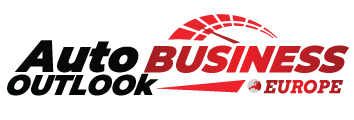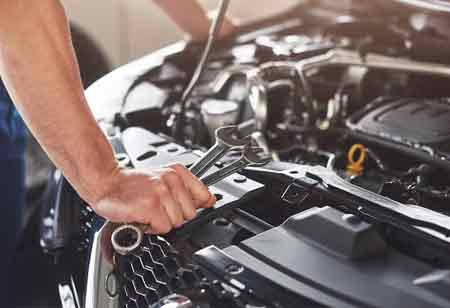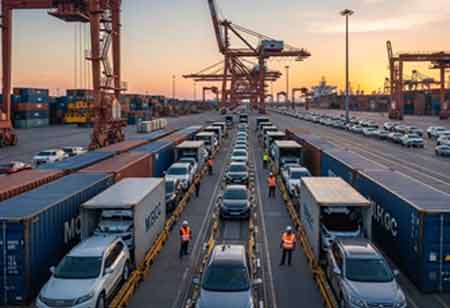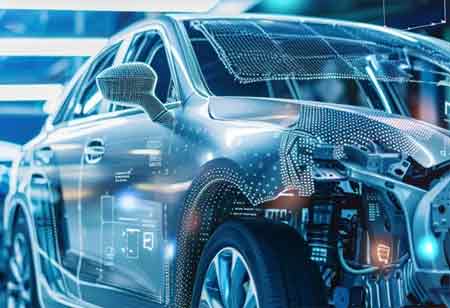Thank you for Subscribing to Auto Business Outlook Weekly Brief
Elevating the Experience: Trends Shaping Luxury Vehicle Transport
Luxury auto transport evolves with sustainability, advanced tracking, and secure logistics, overcoming capacity and compliance challenges through innovation and precision.

By
Auto Business Outlook | Tuesday, November 25, 2025
Stay ahead of the industry with exclusive feature stories on the top companies, expert insights and the latest news delivered straight to your inbox. Subscribe today.

A fine balance of prestige, precision, and protection defines the luxury auto transport service industry as it moves toward new horizons. Market sophistication is growing in concert with client expectations, logistical complexity, and regulatory demand. Providers are adjusting operations, technology adoption, and service paradigms to stay relevant and resilient. The industry now stands at a crossroads where trends, obstacles, and opportunities merge to shape the next generation of high‑end vehicle transitions.
Refined Market Trends Capturing Client Desires
Luxury auto transport services have recently shifted toward greener practices in response to broader emphasis on sustainability. Electric and hybrid transport rigs, biofuel options, and carbon‑neutral delivery at premium rates are fast becoming differentiators. Transporters are increasingly offering enclosed trailers specially outfitted with eco-friendly insulation materials, recyclable padding, and improved aerodynamics to minimize fuel drag. Clients now expect visible sustainability credentials, from route optimization for emission reduction to choice of transport fleet energy sources.
Parallel to environmental concerns, clients demand heightened transparency and customized tracking. Real-time monitoring of environmental conditions through GPS and sensor-based telemetry, including shock handling, humidity, and temperature, is no longer optional; it is expected. Apps and portals offering live status, photo, or video updates at loading/unloading points, along with digital condition reports, enable peace of mind. These trends also extend into service personalization: bespoke pickup schedules, climate-controlled arrival slots, door-to-door delivery, and tailored protection for rare or delicate finishes on luxury cars.
Security sophistication advances hand in hand with customization. Enclosed transport has grown in popularity because it protects vehicles from weather damage, debris, and unauthorized access. Transporters are embedding biometric authentication for drivers and crew, installing surveillance systems, and integrating advanced locking and alarm systems. Regulatory compliance in liability coverage, insurance underwriting, and handling risk is nudging providers toward higher standards of security and documentation, which clients reward with confidence and premium fees.
Operational Challenges and Creative Responses
Transport capacity remains constrained when handling high‑value enclosed units. These units carry fewer vehicles per trip than open carriers, which limits their scalability, especially during peak transport periods tied to auctions, vehicle shows, or seasonal relocations. Providers counterbalance this by dynamic scheduling, route merging, and flexible consolidation agreements to ensure high utilization while maintaining quality standards.
Charging infrastructure and maintenance for electric or hybrid transport rigs pose cost and logistical burdens. Range limitations, charging station availability along long-haul routes, and specialized maintenance requirements necessitate significant investment. Innovative responses include deploying mobile charging trailers, pre‑map charging networks, planning routes that interface with multi‑modal logistics hubs, and modular battery systems for transport vehicles to reduce downtime.
Liability, documentation, and regulatory compliance create administrative overhead. The transfer of vehicle condition, environmental certification, driver credentials, insurance policies, and customs or state border regulations introduces layers of complexity. Technology is helping ease the burden: automated damage detection systems utilize computer vision, digital condition reports include time-stamped, geo-tagged media, and platform-based workflow tools to ensure compliance and traceability. These tools reduce disputes, speed up processing, and lower insurance risk.
Advancements and Stakeholder Opportunities Ahead
Innovation in fleet technology offers an opportunity for transport service providers to gain a competitive edge. Electrified transport rigs, hybrid tractors, and lightweight but strong enclosed trailers reduce operational costs and meet regulatory pressures. Partnerships with manufacturers of EVs and charging systems could yield incentives, shared infrastructure, or co‑ownership models. Suppliers of trailers, insulation materials, and padding are likely to benefit from increased demand for better protective materials.
Technology platforms that deliver transparency, tracking, and customer interface experience represent another growth vector. Clients paying higher premiums expect interfaces that deliver visibility into every journey segment. Providers investing in telematics, IoT sensors, augmented reality‑based damage assessment and condition reports, and digital customer dashboards can differentiate service offerings. Insurers and underwriters will benefit from reduced claim rates and improved risk models when transporters adopt predictive maintenance and better monitoring.
Emerging markets present fertile ground for luxury auto transport services. Growing wealth in certain regions increases demand for relocating high‑end vehicles, collecting exotic cars, or importing premium models. Local providers who can offer service levels matching those in developed markets will find strong demand. Infrastructure development in these markets—such as roads, border processing, and secure depots—will enhance viability. Logistics hubs, port operators, and customs agents have opportunities to streamline services and win business by facilitating the smoother movement of luxury vehicles.
A brief reflection on the benefits indicates that clients increasingly view transportation not just as movement, but as a promise of care, status, and reliability. Stakeholders across the value chain—vehicle owners, transport providers, insurers, technology vendors, regulatory bodies—all gain when standards rise. Greater transparency reduces disputes, premium services command higher margins, and dependable delivery fosters a strong brand reputation for transport providers.
The luxury auto transport service sector now operates in an era where a premium outcome depends on technical finesse as much as prestige. Providers who can adapt to environmental mandates, master logistical complexity, embed technology for traceability and security, and anticipate client demand will be those that define industry leadership.






